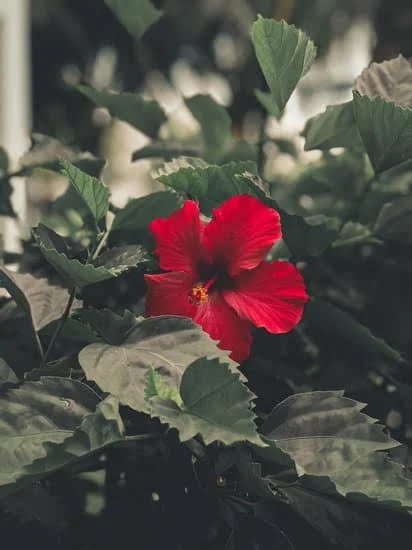Are you interested in creating a visually stunning and functional outdoor space? Tiered gardens may be the perfect solution for you. From small-scale DIY projects to breathtaking examples from around the world, this article will guide you through everything you need to know about tiered gardens ideas. Whether you have a sprawling backyard or limited space, there are endless possibilities for incorporating tiered gardens into your landscape.
Tiered gardens, also known as terraced gardens, are a popular landscaping feature that involves creating multiple levels of planting areas. This design not only adds visual interest to your garden but also maximizes space and provides opportunities for unique planting arrangements. In this article, we will explore the benefits of incorporating tiered gardens, offer tips on choosing the right plants, provide design ideas and maintenance tips, and showcase inspiring examples from across the globe.
Whether you are a gardening enthusiast or a landscaping novice, this comprehensive guide will help you unlock the potential of tiered gardens. From enhancing curb appeal to creating an oasis in your backyard, there are countless ways to use this versatile design concept. So let’s dive in and discover how tiered gardens can elevate your outdoor space.
Benefits of Incorporating Tiered Gardens
Tiered gardens, also known as terraced gardens, offer a range of benefits that make them an increasingly popular choice for both urban and rural landscapes. These multi-level gardens not only add visual interest to outdoor spaces but also provide numerous practical advantages for gardeners.
Maximizing Space
One of the primary benefits of incorporating tiered gardens is the ability to maximize space. By creating multiple levels within a garden, you can effectively utilize slopes and hillsides that may have otherwise been overlooked or underutilized. This is particularly advantageous for homeowners with limited yard space, as it allows them to create additional planting areas without expanding horizontally.
Erosion Control
In addition to maximizing space, tiered gardens also offer natural erosion control. The different levels help to slow down the flow of water and reduce soil erosion on steep landscapes. This can be especially crucial in areas prone to heavy rainfall or run-off.
Visual Appeal
Another benefit of tiered gardens is their aesthetic appeal. The multi-level design creates depth and dimension within the landscape, adding visual interest and creating a more dynamic environment. Tiered gardens also provide opportunities for creative landscaping, allowing for the incorporation of different textures, colors, and plant varieties at each level.
Incorporating tiered gardens into your outdoor space not only offers practical advantages such as maximizing space and controlling erosion but also enhances the overall visual appeal of your landscape. Whether you have a sprawling backyard or a small urban plot, implementing tiered garden ideas can transform your outdoor space into a functional and beautiful sanctuary.
Choosing the Right Plants for Tiered Gardens
When it comes to creating a stunning tiered garden, choosing the right plants is crucial. The different levels of a tiered garden create varying conditions for plants to thrive in, so it’s important to select vegetation that will complement each other and the overall design of the garden. Here are some tips for choosing the right plants for your tiered garden:
1. Consider the sunlight: Since tiered gardens typically have different levels, each level may receive varying amounts of sunlight throughout the day. When choosing plants, take into account their sunlight requirements. For example, sun-loving plants like roses or lavender can be placed on the higher tiers where they’ll receive ample sunlight, while shade-tolerant plants like ferns or hostas can thrive in lower tiers with less direct sunlight.
2. Select plants with similar water needs: Different levels of a tiered garden may also have different moisture levels. Choose plants that have similar water requirements to ensure they all thrive in their respective tiers.
3. Think about aesthetics and function: In addition to considering practical aspects such as sunlight and water needs, think about how you want your tiered garden to look and function. Incorporate a mix of foliage, flowers, and maybe even edible plants to create visual interest and add functionality to your space.
By carefully selecting a variety of plants for your tiered garden based on these considerations, you can create a lush and vibrant outdoor space that is not only visually appealing but also thriving with healthy vegetation. Whether you’re looking to create a colorful flower display or grow edible herbs and vegetables, incorporating the right mix of plant life is essential for the success of your tiered garden project.
Designing Your Tiered Garden
When it comes to designing your tiered garden, there are a few key tips and tricks to keep in mind to ensure that your garden looks beautiful and functions well. Whether you’re working with a small space or a larger area, these tips can help you create a stunning tiered garden that will be the envy of your neighbors.
Consider the Flow
One important aspect of designing a tiered garden is considering the flow of the space. You want to make sure that each level is easily accessible and that there are clear paths for walking and tending to your plants. Think about how you will move through the space and make any necessary adjustments to create smooth transitions between levels.
Plant Placement
When it comes to planting in a tiered garden, it’s important to consider the placement of your plants. Taller plants should be placed at the back of each level, with shorter plants in front, to ensure that every plant gets enough sunlight. Additionally, mixing different types of plants can add visual interest and create a more dynamic garden space.
Utilize Vertical Space
In a tiered garden, vertical space is key. Consider adding trellises, hanging planters, or wall-mounted containers to maximize the use of space and add dimension to your garden. This can also be an effective way to incorporate more plants into your tiered garden without taking up valuable ground space.
By keeping these tips and tricks in mind as you design your tiered garden, you can create a beautiful and functional outdoor space that brings joy and tranquility to your home. Remember to tailor these ideas based on the size of your unique outdoor area.
DIY Tiered Garden Projects
Tiered gardens are a fantastic way to maximize space and create a stunning visual impact in your outdoor area. Building your own tiered garden can be a fun and rewarding DIY project that allows you to unleash your creativity and design a personalized green oasis. Whether you have a large backyard or a compact balcony, there are countless ideas for DIY tiered garden projects that can suit any space.
One popular DIY tiered garden project is the use of recycled materials such as wooden pallets or cinder blocks to create the different levels of the garden. Not only does this add an eco-friendly element to the project, but it also offers endless design possibilities as you can paint or stain the materials to match your outdoor decor.
Another creative idea for a DIY tiered garden project is utilizing planters of varying sizes and shapes to stack on top of one another, creating visually appealing layers of greenery. This can be achieved by arranging pots or containers strategically on sturdy shelving units or even hanging them on hooks attached to a wall or fence.
For those who want to add a touch of rustic charm to their outdoor space, creating a terraced garden with natural stone or rocks is a wonderful DIY project. By building retaining walls using these materials, you can carve out different levels for planting and landscaping, resulting in a beautifully textured and layered garden design.
| DIY Tiered Project | Description |
|---|---|
| Recycled Materials | Using pallets or cinder blocks |
| Stacked Planters | Arranging pots or containers on shelves |
| Terraced Garden with Natural Stone | Building retaining walls with natural stone or rocks |
Creative Ideas for Small Spaces
One of the great things about tiered gardens is that they can be adapted to fit in small spaces. Whether you have a tiny backyard, a balcony, or just a small corner in your yard, there are plenty of creative ideas for incorporating tiered gardens into these areas.
Here are some innovative tiered garden ideas for small spaces:
- Vertical Garden: Utilize vertical space by creating a tiered garden on a wall or fence. Use hanging planters, shelves, or trellises to create different levels for your plants.
- Hanging Gardens: If you have limited floor space, consider hanging gardens. You can use baskets, pots, or even repurposed materials like pallets to create a multi-level hanging garden.
- Spiral Garden: Create an eye-catching spiral garden using stacked containers or terraced planters. This not only adds visual interest but also allows you to grow different plants at varying levels within a compact area.
These creative tiered gardens ideas are perfect for those with limited space but still want to enjoy the benefits of gardening. With some ingenuity and resourcefulness, small spaces can be transformed into lush and vibrant tiered gardens that add beauty and greenery to any environment. Experiment with different designs and materials to find the best option for your unique space.
Maintenance and Care Tips for Tiered Gardens
Maintaining and caring for tiered gardens is essential to keep them looking beautiful and thriving. Proper maintenance not only ensures the health of your plants but also adds to the overall appeal of your garden. Here are some tips to help you take care of your tiered garden:
1. Watering: One of the most important aspects of maintaining a tiered garden is ensuring that each level receives adequate water. Since water tends to flow downwards, it’s crucial to check that the upper tiers are not robbing moisture from the lower ones. Consider installing a drip irrigation system or using self-watering planters to help maintain consistent moisture levels throughout your garden.
2. Pruning and Trimming: Regular pruning and trimming of plants in a tiered garden is necessary to promote healthy growth and prevent overcrowding. Pay attention to the specific needs of each plant species, as some may require more frequent pruning than others.
3. Fertilizing: Different tiers may have varying soil conditions, so it’s important to use fertilizers that address the specific needs of the plants on each level. Consider using slow-release fertilizers for long-term nourishment and be mindful of over-fertilization, which can lead to excessive growth and potentially harm the plants.
In addition to these tips, regular inspection for pests and diseases, proper weed control, and seasonal cleanup are also crucial for maintaining the health and beauty of tiered gardens.
| Maintenance Tips | Care Tips |
|---|---|
| Ensure adequate watering for all tiers | Regular pruning and trimming |
| Use fertilizers specific to plant needs | Inspect for pests/diseases & weed control |
Inspiration
In conclusion, tiered gardens offer a beautiful and innovative way to maximize outdoor spaces and add visual interest to any landscape. By incorporating tiered gardens, you can take advantage of vertical space, create dynamic designs, and showcase a variety of plants and flowers. The benefits of tiered gardens are numerous, from improved drainage and soil stabilization to enhanced aesthetics and increased gardening opportunities.
When choosing the right plants for your tiered garden, consider the varying sunlight conditions on each level and opt for a mix of foliage, flowering plants, and cascading vines to create depth and dimension. Additionally, designing your tiered garden requires careful planning to ensure proper weight distribution, adequate irrigation, and seamless transitions between levels. With some DIY projects and creative ideas for small spaces, you can customize your tiered garden to suit your personal style and preferences.
Stunning examples of tiered gardens around the world serve as an endless source of inspiration for gardening enthusiasts. From terraced rice fields in Southeast Asia to historic hillside gardens in Europe, these extraordinary landscapes showcase the versatility and beauty of tiered gardens.
Whether you have access to expansive outdoor areas or limited space in an urban setting, there are countless ways to bring the magic of tiered gardens into your own backyard. Let these breathtaking examples fuel your creativity as you embark on your own tiered garden journey.
Frequently Asked Questions
How to Make a Tiered Garden?
Making a tiered garden involves creating multiple levels or tiers within your garden space. This can be done using retaining walls, terracing, or raised beds. The key is to ensure each tier is level and stable.
What Can I Grow in a Tiered Garden?
A tiered garden offers flexibility in what you can grow. You can plant a variety of vegetables, herbs, fruits, and flowers in the different tiers. Consider the amount of sunlight each tier receives and choose plants that thrive in those conditions.
How Do You Level a Two Tier Garden?
To level a two-tier garden, you’ll need to first determine the slope and elevation difference between the two tiers. Use a string level or line level to establish a horizontal line for each tier. Then, add or remove soil as needed to achieve a level surface for both tiers.

Welcome to my gardening blog! I am passionate about plants and enjoy sharing my knowledge and experiences with others. In this blog, I will write about everything related to gardening, from tips on how to get started to updates on my own garden projects.





